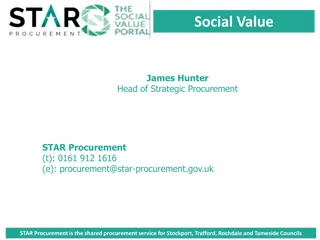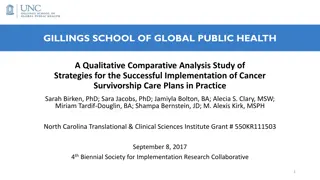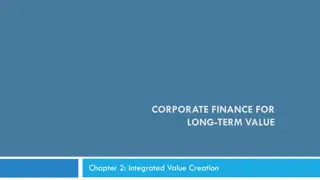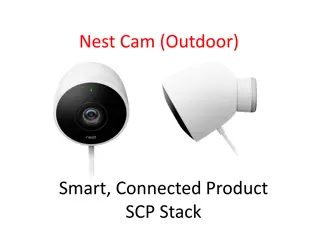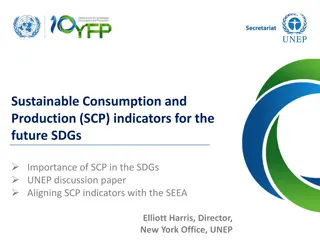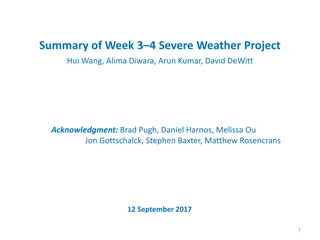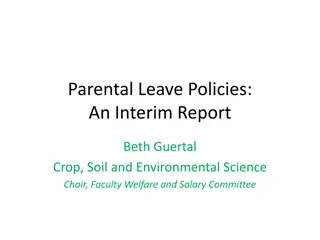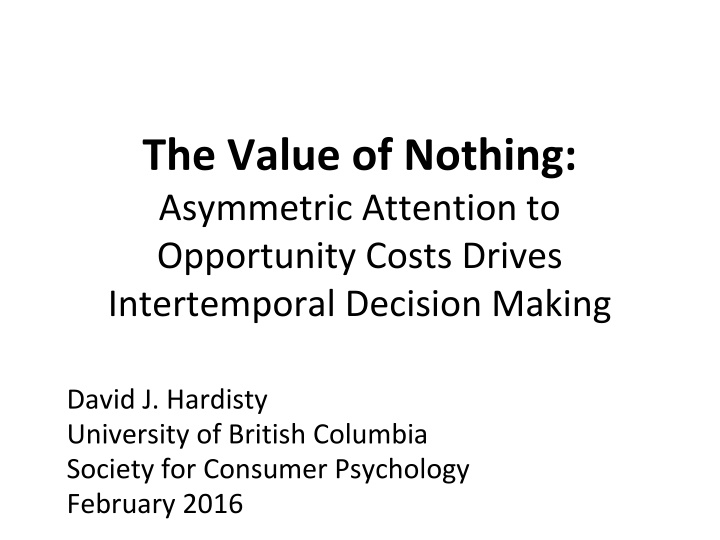
Uncovering Asymmetric Attention in Intertemporal Decision Making
Explore the research on how asymmetric attention to opportunity costs influences intertemporal decision-making, with insights on hidden zero effects, consumer choices, and the impact of various conditions and methods on decision outcomes.
Download Presentation

Please find below an Image/Link to download the presentation.
The content on the website is provided AS IS for your information and personal use only. It may not be sold, licensed, or shared on other websites without obtaining consent from the author. If you encounter any issues during the download, it is possible that the publisher has removed the file from their server.
You are allowed to download the files provided on this website for personal or commercial use, subject to the condition that they are used lawfully. All files are the property of their respective owners.
The content on the website is provided AS IS for your information and personal use only. It may not be sold, licensed, or shared on other websites without obtaining consent from the author.
E N D
Presentation Transcript
The Value of Nothing: Asymmetric Attention to Opportunity Costs Drives Intertemporal Decision Making David J. Hardisty University of British Columbia Society for Consumer Psychology February 2016
Co-Authors Christopher Olivola CMU Daniel Read WBS Read, D., Olivola, C. Y., & Hardisty, D. J. (2016). The Value of Nothing: Asymmetric Attention to Opportunity Costs Drives Intertemporal Decision Making. Working paper.
Consumer choices and opportunity costs J Lev But forego the bigger pension. Jet Lev But forego the JetLev. SOME YEARS HENCE NOW
The Hidden Zero Effect (Magen, Dweck & Gross; 2008) Standard choices between smaller-sooner (SS) and larger-later (LL) rewards. $100 now and $0 in one year OR $0 now and $150 in one year Patience increased Similar results by others (Loewenstein and Prelec 1991, 1993; Radu et al. 2011, Wu and He 2012, Read and Scholten 2012, and Magen et al. 2014)
Why does this happen? $100 now and $0 in one year OR $0 now and $150 in one year Opportunity cost? Sequence effect? Contrast or averaging effect?
Study 1: Conditions Hidden zero: $5.50 now OR $7.50 in 61 days LL zero: $5.50 now OR $0 in now and $7.50 in 61 days SS zero: $5.50 now and $0 in 61 days OR $7.50 in 61 days Explicit zero (both LL and SS): $5.50 now and $0 in 61 days OR $0 in now and $7.50 in 61 days
Study 1: Methods 610 participants recruited through Maximiles 15 hypothetical intertemporal choices DV: proportion of LL choices (patience)
Study 1: Results Hidden zero: $5.50 now OR $7.50 in 61 days LL zero: $5.50 now OR $0 in now and $7.50 in 61 days SS zero: $5.50 now and $0 in 61 days OR $7.50 in 61 days Explicit zero (both LL and SS): $5.50 now and $0 in 61 days OR $0 in now and $7.50 in 61 days SS zero does all the work LL zero does NOTHING Asymmetric opportunity cost? Sequences? Contrast?
Study 1: Conditions Middle zero: $5.50 now and $0 in 30 days OR $0 in 30 days and $7.50 in 61 days
Study 1 Results NO effect of LL zero SS zero does all the work. NO effect of Middle zero SS zero Ex- plicit Hid- den Midd le LL zero
Asymmetric Subjective Opportunity Cost (ASOC) Reminding people that they won t get something now has no effect they already know this. But reminding them that if they won t get something later that is not so obvious.
Moderating & Generalizing ASOC Study 2: Magnitude Study 3: Now effect Study 4: Losses Study 5: Nothing Study 6: Real outcomes, RTs Study 7: Separate reminder Study 8: Other domains
Study 2: Magnitude Items from Kirby, Petry, & Bickle (1999) : Small: 25 today OR 30 in 80 days Medium: 49 today OR 60 in 89 days Large: 69 today OR 85 in 91 days Prediction: Maybe our effect will get smaller at larger magnitudes
Study 2 Results Magnitude Zero Condition Small Medium Large N Explicit .53 .58 .61 58 SS zero .54 .60 .61 55 LL zero .42 .48 .49 50 Hidden .40 .43 .48 47 ASOC effect .13 .14 .13
Moderating & Generalizing ASOC Study 2: Magnitude robust! Study 3: Now effect Study 4: Losses Study 5: Nothing Study 6: Real outcomes, RTs Study 7: Separate reminder Study 8: Other domains
Study 3: Now Perhaps there s something special about now , driving the asymmetry Today-SS: 5.50 today and 0 in 61 days OR 0 today and 7.50 in 61 days Delayed-SS: 5.50 in 61 days and 0 in 122 days OR 0 in 61 days and 7.50 in 122 days Prediction: maybe effect will disappear in delayed-SS condition (alternative is ASAP effect, Kable & Glimcher 2010)
Moderating & Generalizing ASOC Study 2: Magnitude robust! Study 3: Now effect robust! Study 4: Losses Study 5: Nothing Study 6: Real outcomes, RTs Study 7: Separate reminder Study 8: Other domains
Study 4: Losses Losses eliminate or flip several intertemporal choice phenomena (Appelt, Hardisty, & Weber 2011; Hardisty, Appelt, & Weber 2013; Thaler 1981) Receive: 5.50 today and 0 in 61 days OR 0 today and 7.50 in 61 days Pay: 5.50 today and 0 in 61 days OR 0 today and 7.50 in 61 days
Moderating & Generalizing ASOC Study 2: Magnitude robust! Study 3: Now effect robust! Study 4: Losses robust! Study 5: Nothing Study 6: Real outcomes, RTs Study 7: Separate reminder Study 8: Other domains
Study 5: Nothing Literally a 0 effect? Receive 25 today and nothing in 29 days OR Receive nothing today and 35 in 29 days
Moderating & Generalizing ASOC Study 2: Magnitude robust! Study 3: Now effect robust! Study 4: Losses robust! Study 5: Nothing robust! Study 6: Real outcomes, RTs Study 7: Separate reminder Study 8: Other domains
Study 6: Real Choices, RTs Stanford Students (N=301) Paid out one trial randomly using an Amazon gift certificate (including immediate payments) Also recorded response times
Real vs Hypothetical Outcomes Hypothetical (Study 1) .64 .61 .47 .50 Real (Study 8) .66 .63 .55 .56 Explicit Later Sooner Hidden Hidden zero effect (Explicit minus Hidden) .14 .10
Study 6: RTs LL zero ABSENT LL zero PRESENT 8.6 8.55 5.0 sec average LN response time 8.5 4.8 sec 8.45 8.4 8.35 4.2 sec 8.3 3.8 sec 8.25 8.2 SS zero ABSENT SS zero PRESENT
Moderating & Generalizing ASOC Study 2: Magnitude robust! Study 3: Now effect robust! Study 4: Losses robust! Study 5: Nothing robust! Study 6: Real outcomes, RTs robust! Study 7: Separate reminder Study 8: Other domains
Study 7: Separate reminder Literally a 0 effect? Or really about opportunity cost?
Moderating & Generalizing ASOC Study 2: Magnitude robust! Study 3: Now effect robust! Study 4: Losses robust! Study 5: Nothing robust! Study 6: Real outcomes, RTs robust! Study 7: Separate reminder robust! Study 8: Other domains
Study 8: Other domains Could zeroes save lives? Suppose the government was choosing between two public health programs to save lives. Which would you prefer? Save 11 lives in 2016, but save 0 lives in 2017 Save 13 lives in 2017, but save 0 lives in 2016
Study 8: Other domains Public health Pollution & air quality Mass Transit Chocolates Phone discount Music & movie downloads
Study 8: Other domains LL zero ABSENT LL zero PRESENT 0.65 Patience (proportion of LL choices) 0.6 0.55 0.5 0.45 0.4 SS zero ABSENT SS zero PRESENT
Moderating & Generalizing ASOC Study 2: Magnitude robust! Study 3: Now effect robust! Study 4: Losses robust! Study 5: Nothing robust! Study 6: Real outcomes, RTs robust! Study 7: Separate reminder robust! Study 8: Other domains robust!
Other Studies People do not predict it No effect on thought listings May NOT work for a single item now vs later (?) Zero effect is smaller on MTurk Overall N = 5447, d = .32 Run with 6 different populations (from 4 different countries)
Summary People are naturally aware of sooner (but not future) opportunity costs Partly explains high discount rates SS zero nudge reminds people of future opportunity cost, increasing patient choices






